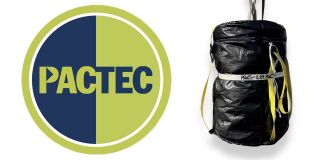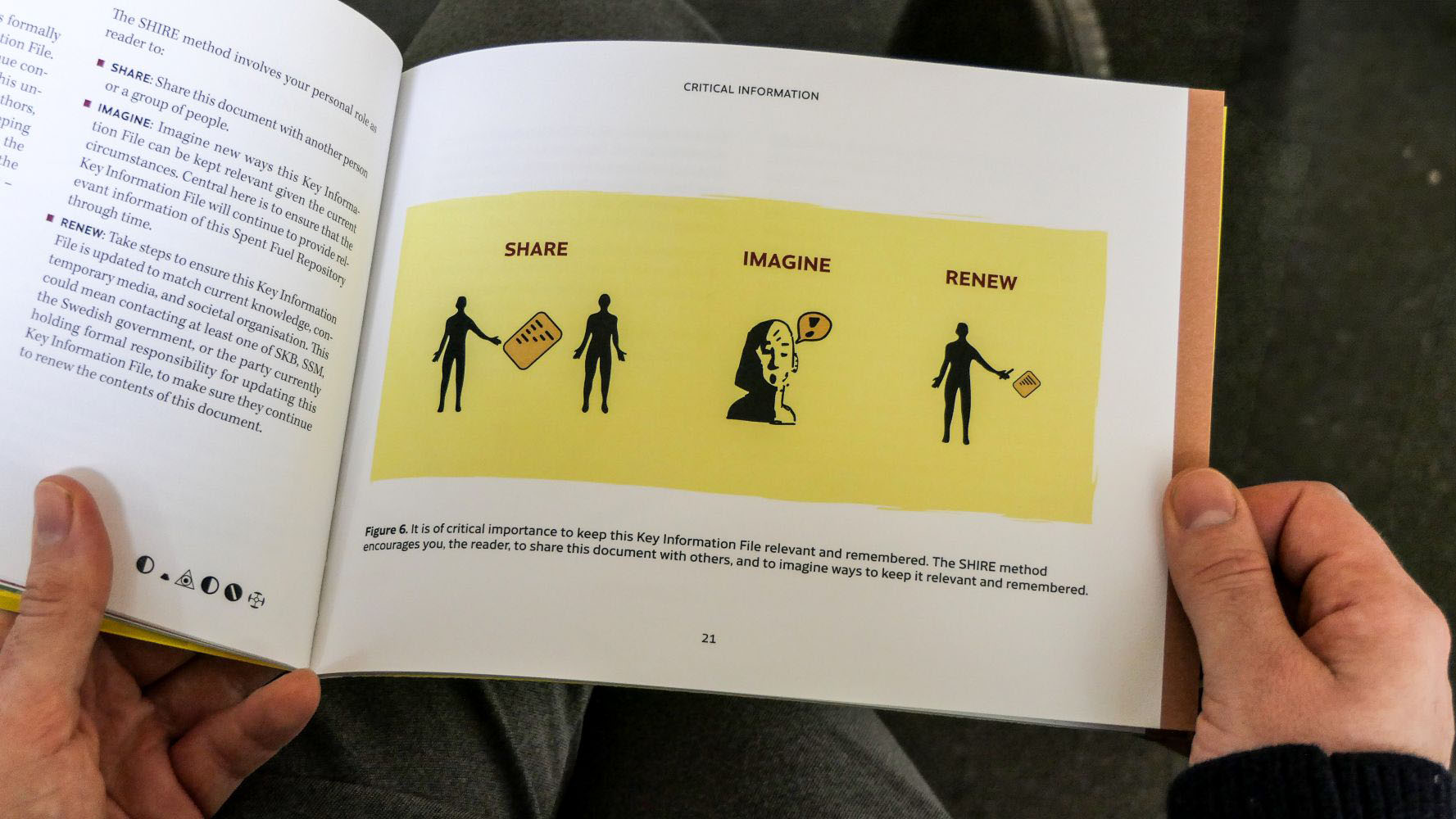Argonne physicist Michael Kelly loads a superconducting cavity into a large furnace. (Photo: ANL)
Argonne National Laboratory said it has secured just over $10 million from the Department of Energy’s Advanced Research Projects Agency–Energy (ARPA-E) for two research projects investigating the transmutation of spent nuclear fuel into less radioactive substances.
The NWMO has launched a two-year engagement process as it begins plans for a second deep geological repository to manage radioactive waste in Canada. (Photo: NWMO)
The Nuclear Waste Management Organization, which is mandated by law to develop an approach for the long-term care of Canada’s spent nuclear fuel, has begun collecting feedback from Canadians and Indigenous people to help refine its process for selecting a second deep geologic repository site.
Workers offload nitrogen into the LAW Facility at Hanford’s Waste Treatment and Immobilization Plant. The nitrogen, mixed with other materials, will simulate tank waste as the facility prepares for waste operations later this year. (Photo: DOE)
The Department of Energy’s Office of Environmental Management announced that it has introduced waste simulant chemicals to the Hanford Site’s Waste Treatment and Immobilization Plant (WTP) as part of the cold commissioning testing of the plant’s Low-Activity Waste Facility.
Simulator instructor Marc Widener at the controls of a new crane simulator for the Savannah River Site’s Defense Waste Processing Facility.
The Department of Energy’s Office of Environmental Management said it will use a new simulator to help train operators on the safe and efficient movement of a remotely operated crane at the Defense Waste Processing Facility (DWPF) at the Savannah River Site in South Carolina. The DWPF, where Savannah River’s liquid high-level radioactive waste is vitrified and placed into storage containers, uses an unmanned bridge crane system to install and replace equipment in the high-humidity, high-radiation, and harsh chemical environment of the facility’s processing cells.
Deep Isolation’s Universal Canister System. (Photo: Deep Isolation)
Nuclear waste disposal technology company Deep Isolation announced it has successfully completed Project PUCK, a government-funded initiative to demonstrate the feasibility and potential commercial readiness of its Universal Canister System (UCS) to manage TRISO spent nuclear fuel.
NWMO vice president and chief engineer Chris Boyle addresses vendors at the NWMO’s Discovery and Demonstration Center. (Photo: NWMO)
Canada’s Nuclear Waste Management Organization has selected five companies it is to work with to design and plan the organization’s proposed deep geologic repository for spent nuclear fuel. As the owner of the project, the NWMO will be working with WSP Canada, Peter Kiewit Sons (Kiewit), Hatch Ltd., Thyssen Mining Construction of Canada, and Kinectrics.
NAC International’s Volunteer package. (Image: NAC)
NAC International has announced that it has received certification from the Nuclear Regulatory Commission for its new high-capacity Volunteer packaging system for transporting nonfissile or fissile-exempt radioactive materials.
Hanford workers move a 330-gallon double-wall transport container of treated tank waste. (Photo: DOE)
As part of its Test Bed Initiative (TBI) demonstration project, the Department of Energy’s Office of Environmental Management completed two shipments of treated, low-activity tank waste from the Hanford Site near Richland, Wash. The approximately 2,000 gallons of TBI waste will be solidified in grout and permanently disposed of at Waste Control Specialists’ (WCS) federal disposal facility in Andrews County, Texas, and at EnergySolutions’ disposal facility in Clive, Utah.
A 1960s Electrolux vacuum cleaner was discovered in Sellafield’s Pile Fuel Cladding Silo. (Photo: Sellafield Ltd.)
A 1960s Electrolux vacuum cleaner was among the more unusual items workers removed from one of the world’s oldest nuclear waste stores at the United Kingdom’s Sellafield nuclear site.
An ICP worker supervises an evaluation of ultrasonic testing technology recently at the INL Site’s Advanced Mixed Waste Treatment Project. (Photo: DOE)
New ultrasonic testing equipment being used by the Department of Energy’s Idaho Cleanup Project (ICP) to confirm the integrity of thousands of legacy waste drums is saving taxpayers tens of millions of dollars, the DOE’s Office of Environmental Management announced.
The technology allows ICP personnel to inspect the thickness transuranic waste drums held in storage at the DOE’s Idaho National Laboratory Site, ensuring they meet Department of Transportation minimum thickness requirements to be shipped for disposal at the Waste Isolation Pilot Plant in New Mexico. According to DOE-EM, if drums meet the DOT thickness requirements, they can be loaded directly into shipping casks without the need for an expensive overpack container, leading to a minimum cost savings of $26 million.
OREM team members with the transport cask used to ship the legacy waste out of state for permanent disposal. (Photo: DOE)
Oak Ridge National Laboratory has successfully removed legacy radioactive waste stored for more than five decades, marking a significant cleanup milestone. The Oak Ridge Office of Environmental Management (OREM) and cleanup contractor UCOR processed and shipped highly radioactive source material, including radium-226 and boron, out of state for permanent disposal.
Deep Isolation’s Rod Baltzer and Deep Fission’s Elizabeth Muller. (Photo: Deep Fission)
Nuclear start-ups Deep Fission and Deep Isolation will collaborate on the management of spent nuclear fuel from Deep Fission’s advanced underground reactors under a memorandum of understanding signed by the companies.
Researchers at the University of Sheffield are exploring new cement technologies to safely encapsulate nuclear waste. (Photo: University of Sheffield)
The University of Sheffield announced that it has engaged in a new £1 million (about $1.29 million) research partnership with Sellafield Ltd., the U.K. Nuclear Decommissioning Authority, and the U.K. National Nuclear Laboratory that will seek to address some of the challenges of nuclear waste encapsulation by looking at new cement technologies to provide safe and reliable disposal solutions.
The KIF document is meant to engage the reader to share, imagine, and renew nuclear waste information. (Photo: Per Wistbo Nibell)
The preservation of records, knowledge, and memory is recognized as an important component of nuclear waste management, preventing future generations from unnecessary interference with a waste repository and supporting future societies to make informed decisions about such sites.
HEPA filters located within the Safety Significant Confinement Ventilation System facility at the Waste Isolation Pilot Plant. (Photo: DOE)
The Department of Energy’s Office of Environmental Management announced that it has completed the commissioning of a new, nearly $500 million, large-scale ventilation system at its Waste Isolation Pilot Plant, the DOE’s geologic repository for defense-related transuranic waste in New Mexico.













.jpg)



